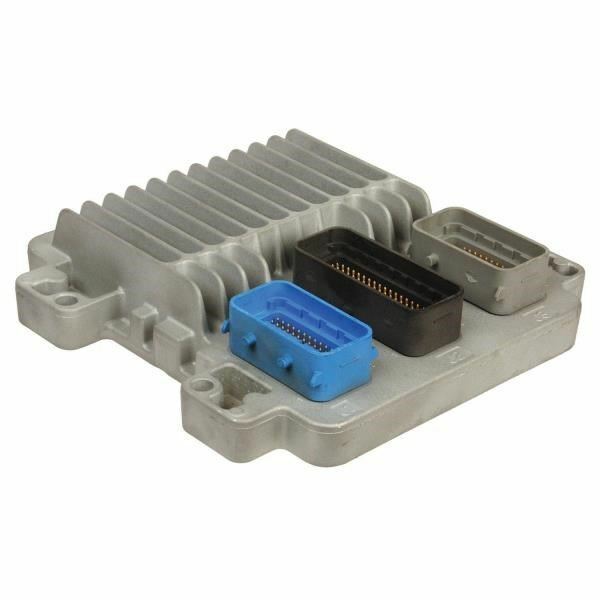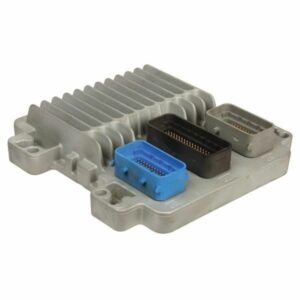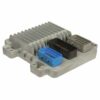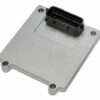Restore Peak Performance to Your GM V8
Is your 2005 Buick Rainier or other GM vehicle suffering from frustrating issues like intermittent stalling, a persistent Check Engine Light, or erratic engine behavior? You’re not just imagining it. The Engine Control Module (ECM) is the brain of your vehicle’s powertrain, and when it fails, it can cause a cascade of problems that are often misdiagnosed. I’ve seen it countless times in my 20+ years in the shop: owners spend hundreds on new sensors and wiring repairs, only to find the root cause was the ECM all along. This module is the definitive solution for a faulty computer, restoring the precise fuel, spark, and transmission commands your vehicle needs to run smoothly and reliably.
This isn’t just a replacement part; it’s a complete, ready-to-install solution. We take the guesswork and high dealership costs out of the equation. Before this 2005 Rainier Engine Module ships, our technicians will program it with the latest official GM software updates using the unique Vehicle Identification Number (VIN) you provide. This ensures perfect communication with your vehicle’s specific systems and often corrects underlying software bugs from the original factory programming, leading to improved drivability and efficiency.
A Technician’s Notebook: The Ghost in the Machine
I remember a 2005 Envoy 5.3L that came into the bay with a complaint of random stalling at stoplights and a P0606 (ECM Processor Fault) code that would come and go. The owner had already replaced the crankshaft sensor and checked the main power and grounds. Everything looked fine. On a hunch, I monitored the 5-volt reference signal from the ECM to the sensors. Most of the time it was steady, but then, for a split second, it would dip. That tiny voltage drop was enough to confuse the sensors and stall the engine. It wasn’t a wiring short; it was an internal failure in the ECM’s voltage regulator. We installed a VIN-programmed module just like this one, and the problem was solved instantly. It’s a classic example of how a failing ECM can create ghost-like symptoms that are impossible to trace externally.
Common Signs of a Failing ECM
- ✔ Engine stalling or shutting off unexpectedly.
- ✔ Persistent Check Engine Light (CEL) that won’t clear.
- ✔ Diagnostic Trouble Codes (DTCs) like P0601, P0602, or P0606.
- ✔ Poor fuel economy and noticeable loss of power.
- ✔ Harsh or erratic automatic transmission shifting.
- ✔ The engine cranks but refuses to start (no-start condition).
- ✔ Communication errors with diagnostic scan tools.
A Straightforward Guide to Installation
- ✔ Safety First: Disconnect the negative terminal from your vehicle’s battery and secure it away from the post.
- ✔ Locate the ECM: On most of these vehicles, including the Buick Rainier, the ECM is located in the engine bay on the driver’s side, often near the air filter box.
- ✔ Disconnect Connectors: Carefully release the locking tabs and unplug all wiring harness connectors from the old module. Inspect the connectors for any corrosion or damage.
- ✔ Remove the Old Module: Unbolt the old ECM from its mounting bracket. It’s typically held by a few bolts or nuts.
- ✔ Install the New Module: Mount your new, pre-programmed 2005 Rainier Engine Module in place and securely fasten it.
- ✔ Reconnect Everything: Plug the wiring harnesses back into the new ECM until they click securely. Reconnect the negative battery terminal.
- ✔ Perform Security Relearn: You may need to perform a simple key-cycle security relearn procedure. Turn the key to the ‘ON’ position for 10-15 minutes, then ‘OFF’ for 10 seconds. Repeat this two more times. On the fourth try, the vehicle should start.
Verified Vehicle Compatibility
This module is a direct-fit replacement, programmed specifically for your vehicle. It is compatible with service numbers 12578554, 12596771, 12597191, 12597883, and 19210071. It fits the following 2005 models:
- ✔ Buick Rainier: 5.3L (LH engine)
- ✔ Chevrolet Corvette: (RH engine compartment)
- ✔ Chevrolet SSR: (next to air box)
- ✔ Chevrolet Trailblazer EXT: 5.3L (LH engine)
- ✔ GMC Envoy / Envoy XL / Envoy XUV: 5.3L (LH engine)
- ✔ Isuzu Ascender: 5.3L (LH engine)
- ✔ Pontiac GTO: Main (LH engine)
- ✔ Saab 9-7X: 8 cylinder (LH engine)
Your Trusted Solution for Engine Management
Don’t let a faulty computer keep your vehicle off the road. This pre-programmed 2005 Rainier Engine Module is the most reliable and efficient way to solve complex electronic issues. By providing your VIN at checkout, you ensure that you receive a part that is perfectly matched to your vehicle’s factory specifications, updated with the latest software for a lasting repair. Get your vehicle running right again.
Frequently Asked Questions
Does this module really come programmed?
Yes! This is the core of our service. We use your vehicle’s VIN to flash the module with the correct, most recent GM software before it ships. This eliminates the need for expensive programming at a dealership or specialized shop.
What is a VIN and where do I find it?
The VIN (Vehicle Identification Number) is a unique 17-digit code for your vehicle. You can find it on the driver’s side of the dashboard (visible through the windshield), on your vehicle’s registration, or on the driver’s side door jamb sticker.
What is the security relearn procedure?
It’s a simple process that syncs the new ECM with your vehicle’s anti-theft system. After installation, you typically turn the key to ‘ON’ for 10-15 minutes, then ‘OFF’ for 10 seconds, and repeat this cycle three times. On the next attempt, the vehicle will start. We include instructions with your order.
Is this a difficult part for a DIYer to install?
Not at all. For most of the listed vehicles, this is one of the easier modules to replace. It typically involves disconnecting the battery, unplugging a few connectors, and unbolting the module. No special tools are required for the physical installation.
Will this fix my check engine light?
If the check engine light is caused by an internal ECM failure (like codes P0601 or P0606), then yes, this module is the correct fix. However, you should always ensure other components like sensors and wiring have been properly diagnosed first.



